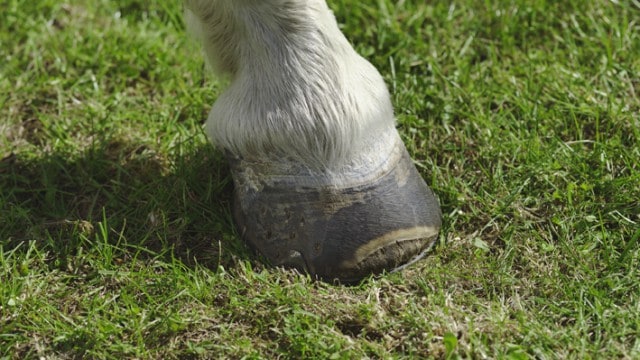What are the underlying causes of laminitis?

Dr Jo Ireland from the Animal Health Trust discusses how the national disease awareness initiative, Talk About Laminitis (TAL), has contributed to the advancement of veterinary understanding about the underlying causes of laminitis
Talk About Laminitis
This disease awareness initiative is aimed at raising awareness of the underlying hormonal causes of laminitis – PPID (Cushing’s disease) and equine metabolic syndrome (EMS). The initiative, supported by Redwings, The British Horse Society and World Horse Welfare, is now in its fifth year. As part of the scheme, the laboratory fees for the blood test which detects PPID (the basal ACTH test) are free.
Testing
Since its launch in September 2012, over 36,000 horses, ponies and donkeys have been tested for PPID through the scheme. The majority of these animals had clinical signs suspicious of PPID and overall over 50 per cent had positive test results, aiding the diagnosis of PPID in thousands of cases1. This has contributed to PPID being recognized as the sixth most frequently encountered disease affecting horses in the UK2.
Previous research has identified age as the major risk factor for PPID, so it was not surprising that the TAL data showed the average age at diagnosis to be 20 years. While uncommon in horses less than 10 years of age, over a third of horses and ponies aged between 10 and 15 years that had clinical signs of PPID (including laminitis) were affected.
This has led to a revision of recommendations about the age of testing for PPID, with most veterinary surgeons now testing any laminitic case from the age of 10 upwards.
The warning signs
The TAL scheme also gathers details about clinical signs observed in horses being tested for PPID. The most common signs were:
- Current and/or previous episode(s) of laminitis (46 per cent of all animals tested);
- Hair coat abnormalities or abnormal moulting/hair coat shedding (32 per cent of animals tested);
- Muscle wastage, particularly of the topline or hindquarter muscles (17 per cent of all animals tested).
Unsurprisingly, both the percentage of animals testing positive and the average ACTH concentration increased with increasing number of clinical signs observed. This suggests that early or mild cases of PPID may show very few obvious clinical signs, and that the presence of a number of clinical signs associated with PPID may indicate more advanced disease. Horses with active or previous laminitis were significantly younger than those without laminitis, indicating this may be the first clinical sign of PPID in many cases.
On the other hand, horses reported to have hair coat abnormalities or muscle wastage were significantly older than those without these signs, indicating that these signs may be recognised in more advanced cases.
The odds of a positive test result were increased for animals with a history of laminitis, and those exhibiting hair coat changes, muscle wastage or abnormal fat deposits above the eyes. This correlates with previous studies where the presence of coat changes or abnormal shedding showed the strongest association with PPID, and horses showing these changes had more than two times greater odds of being diagnosed with the condition.
Awareness
The Talk About Laminitis disease awareness initiative, which is supported by Redwings, The British Horse Society and World Horse Welfare, is offering free laboratory fees for the ACTH test until the end of October. For further information visit www.talkaboutlaminitis.co.uk.
References
1. Boehringer Ingelheim, ACTH tests run via TAL 2012-2015
2. National Equine Health Survey 2015
About the expert
Dr Jo Ireland is a veterinary epidemiologist at the Animal Health Trust. Having her own veteran horses gave Jo a keen interest in geriatric medicine, which led her to undertake a PhD research study in equine geriatric health and welfare. Since focusing her career on research, one of her main areas of interest is endocrine conditions affecting veteran horses and ponies.






